Hi everyone,
Borneo is probably my favorite place to be on earth. It just has a special flavor, a special atmosphere that I haven’t found anywhere else. When I am setting foot in Kota Kinabalu, everything vibrates in a different way, making me feel at home but, at the same time, giving me an amazing sensation of building excitation and mystery. The forests of Borneo, to this day, stand as being some of the most diverse in the world and the fauna of Borneo is seen worldwide as being one of the world’s most unique and exciting.
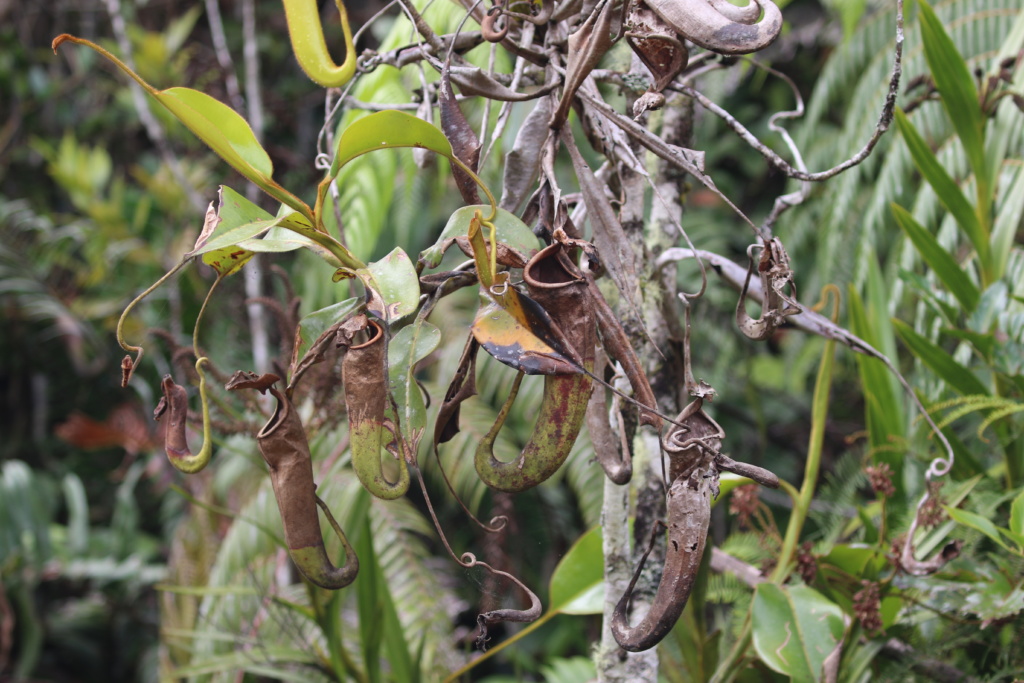 Pitcher plants are amongst Borneo’s most coveted plants, both for photographers and collectors. Gunung Alab is home to at least three species of Nepenthes, including Nepenthes fusca, photographed here !
Pitcher plants are amongst Borneo’s most coveted plants, both for photographers and collectors. Gunung Alab is home to at least three species of Nepenthes, including Nepenthes fusca, photographed here !
I feel so lucky to be able to visit Borneo (at least the Malaysian state of Sabah) on a regular basis and to have made good friends there, both amongst conservation researchers, zoologists and local everyday people. There are so many places to go to see endemic animals on this island and in Sabah alone but, if you truly want to experience what Borneo is about, you should aim for the mountains ! Near Kota Kinabalu lies the Crocker Range. Located within 90 minutes of driving, this mountain range is still home to lots of endemic animals and plants even if deforestation has been particularly intense in this area, for agriculture.
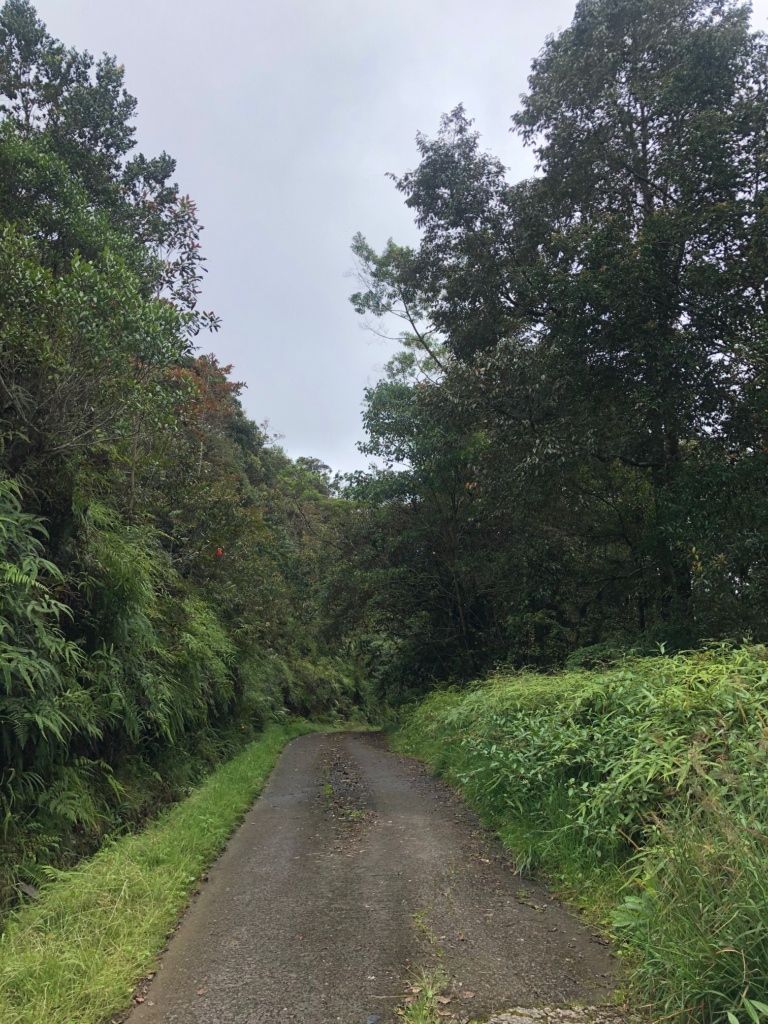 The path to Gunung Alab Substation and the birding areas. Even though some areas have been partly deforested, many trees and a big diversity of local plants remain.
The path to Gunung Alab Substation and the birding areas. Even though some areas have been partly deforested, many trees and a big diversity of local plants remain.
My history with Gunung Alab goes back to 2016 when I asked my driver to take me to Kipandi Butterfly Farm. I couldn’t find anyone who knew about that place but the name “Kipandi” ringed a bell to my driver and he drove me in the mountains where we ended up finding the butterfly and orchid farm (unfortunately now closed to public). Little did I know at this time that barely a few minutes away, if we had continued to drive uphill, I would have found an amazing forested area where many of Borneo’s most prized avian endemics (such as the Bulwer’s pheasant and Bornean argus pheasant) can be found. This piece of paradise is near the summit area of Gunung Alab (in english, Mt Alab). A bumpy road leads all the way to Gunung Alab Substation where rangers are watching over a magnificent orchid garden and tourist accomodations that were still closed when I visited (probably because of Covid 19). The road continues to a power-plant with two huge antennas and this area is well-known amongst birders to be a really good spot to observe mountain endemic species that can be tricky in other better-known areas such as the mighty Mt Kinabalu.

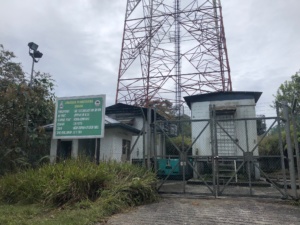
The welcome sign to Gunung Alab Substation and the powerplant located at 1600 meters above sea level.
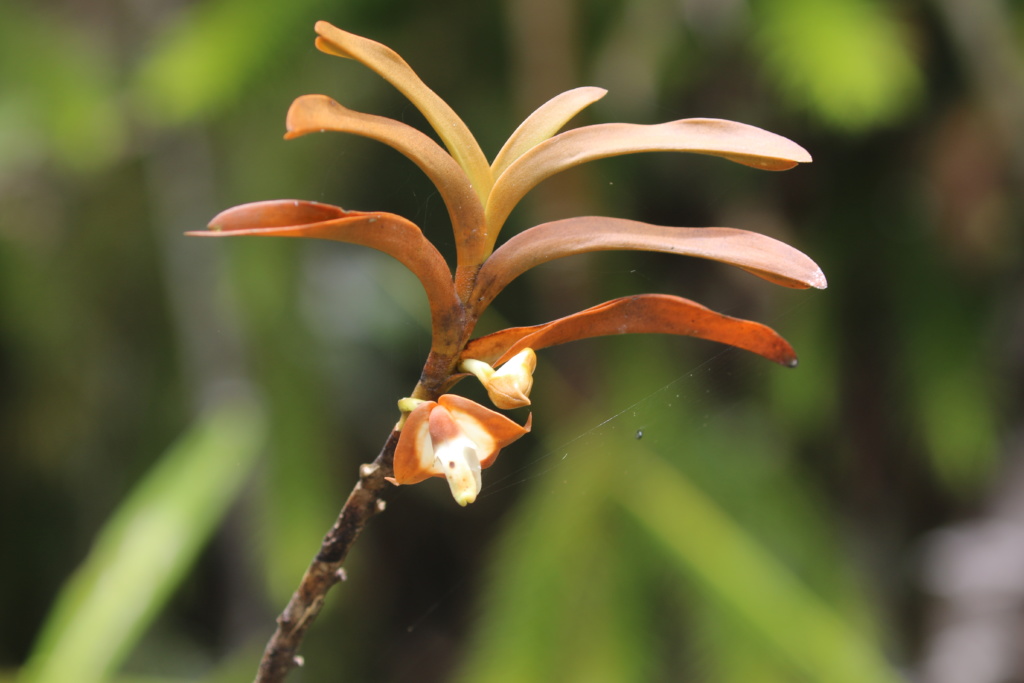 Gunung Alab is also a great site to photograph Bornean endemic orchid species such as Dendrobium lambii
Gunung Alab is also a great site to photograph Bornean endemic orchid species such as Dendrobium lambii
Having damaged my left knee in the Philippines, I had to pass on going back to Mt Kinabalu with a heavy heart but I was told by local guides that the hike to Gunung Alab’s main birding site isn’t that hard so I chose to give it a try. The main and biggest target of my stay on Borneo was the beautiful mountain endemic Crimson-headed partridge (Haematortyx sanguiniceps). This dimorphic partridge species is, like I just said, endemic to the mountain forests of northern Borneo. Although it isn’t particularly scared of humans in protected areas of its range, it remains globally difficult to photograph as it rarely comes in the open. I had seen the species twice around Mt Kinabalu but never got an open-shot possibility. Gunung Alab is also a good spot to see other Bornean mountain endemics such as the Red-breasted partridge (Arborophila hyperythra) or the Golden-naped barbet (Psilopogon pulcherrimus). I didn’t see the first and got only very brief view of the later but this is only the beginning of my story with Gunung Alab ! I am definitely going back there to document more wildlife and stay longer (possibly even at night if the substation’s accomodations open again).
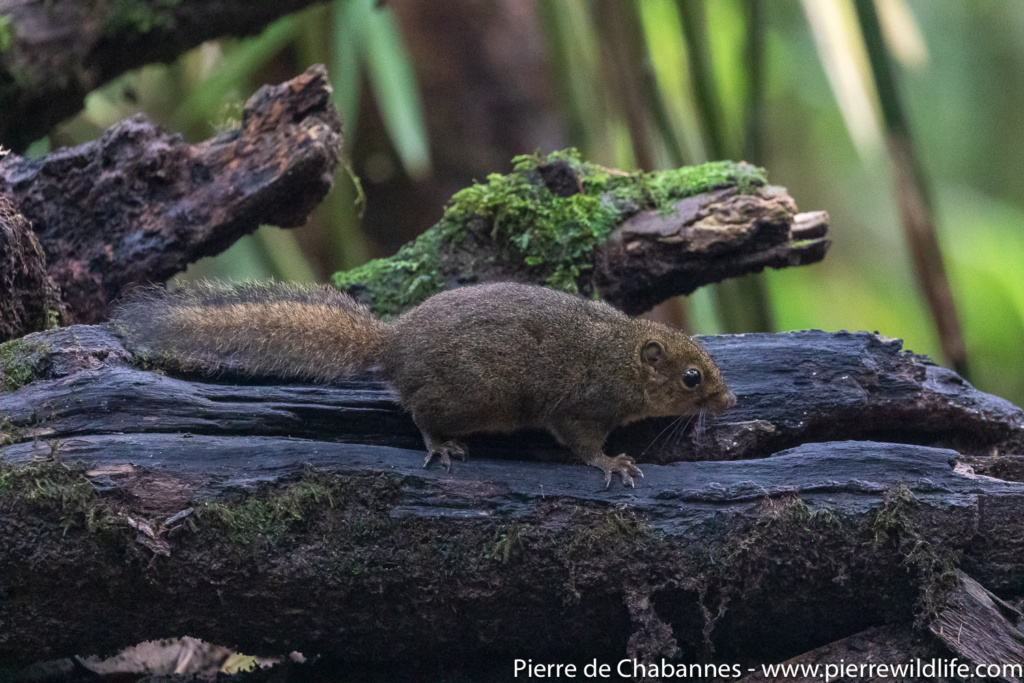 Bornean fauna’s diversity never ceases to amaze me. Just in Sabah alone, there are at least 10 to 15 species of squirrels, maybe even more ! Discover the identify of this special one later in the story !
Bornean fauna’s diversity never ceases to amaze me. Just in Sabah alone, there are at least 10 to 15 species of squirrels, maybe even more ! Discover the identify of this special one later in the story !
As I was birding around Gunung Alab’s sites, I was also looking for insects and butterflies especially. While I did see some butterflies, I had almost no possibilities of taking any good photo at all because of very strong winds so my quest for invertebrates got limited to a couple of cricket species (Nisitrus vittatus and Nisitrus musicus respectively), a mating pair of beetles (Chrysolina kinabaluensis), an unidentified tractor millipede and big numbers of Black-striped orchard spiders (Leucauge celebesiana).
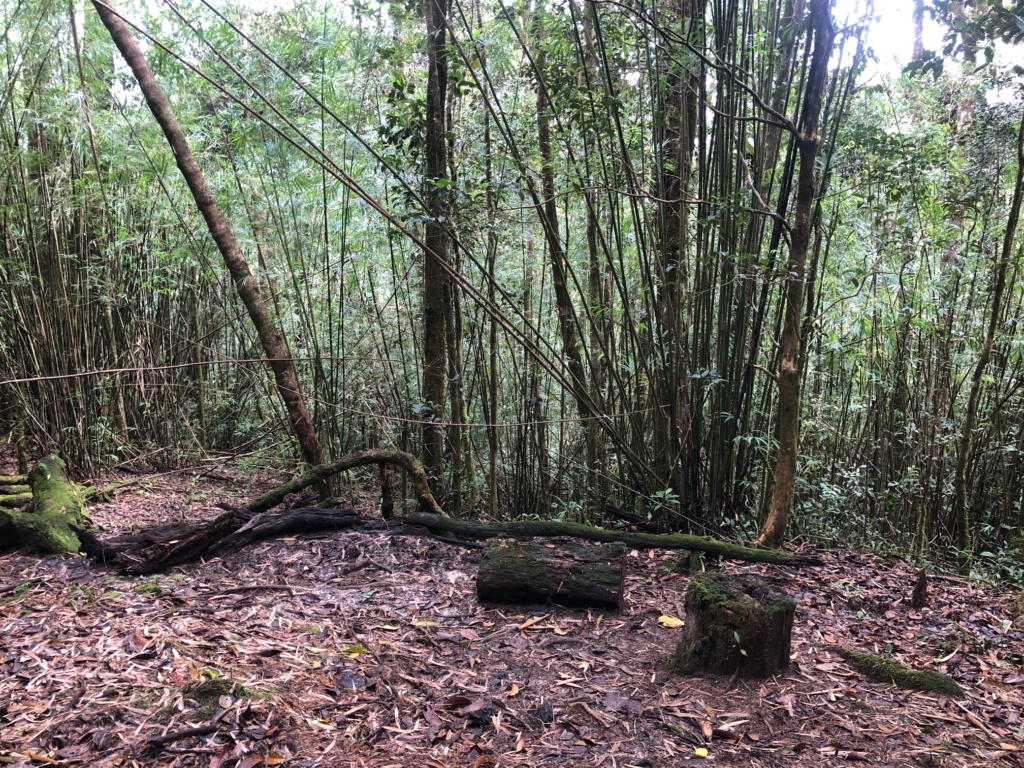 The high-altitude forest in Gunung Alab is composed of large stands of bamboo. This area is one of the best to observe partridges and the extraordinary Bulwer’s pheasant.
The high-altitude forest in Gunung Alab is composed of large stands of bamboo. This area is one of the best to observe partridges and the extraordinary Bulwer’s pheasant.
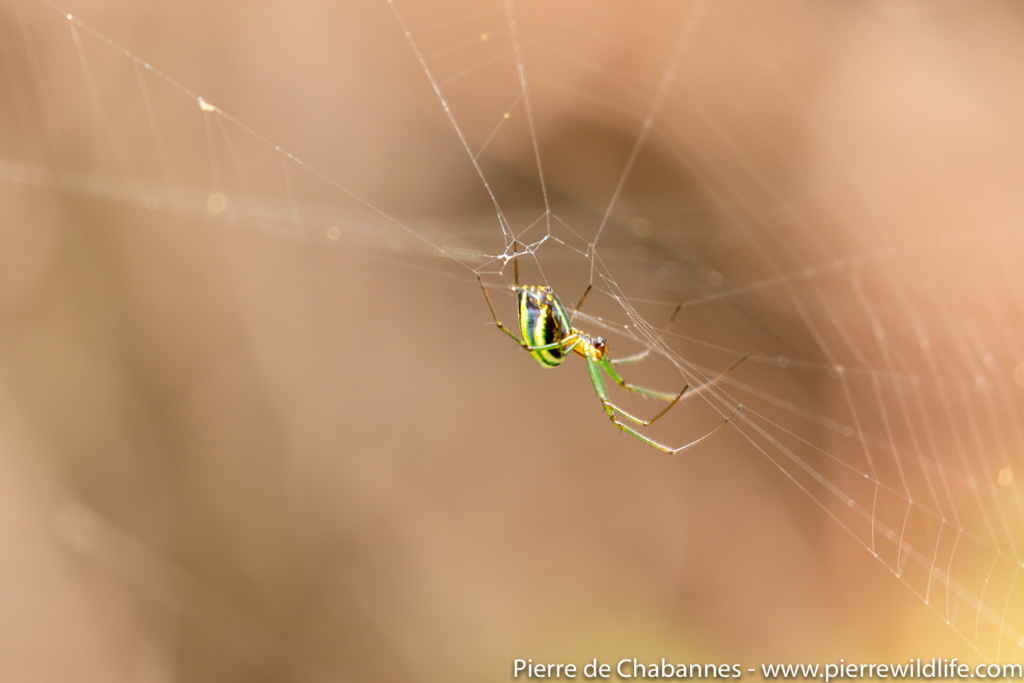 One of the many black-striped orchard spiders (Leucauge celebesiana) around.
One of the many black-striped orchard spiders (Leucauge celebesiana) around.
The very cold wind also deterred most other animals to show up that particular morning but, nonetheless, I was blessed with very good sightings of Rufous-chested flycatchers (Ficedula dumetoria muelleri), a beautiful pair of Snowy-browed flycatcher (Ficedula hyperythra sumatrana) and a few migratory Grey wagtails (Motacilla cinerea cinerea).
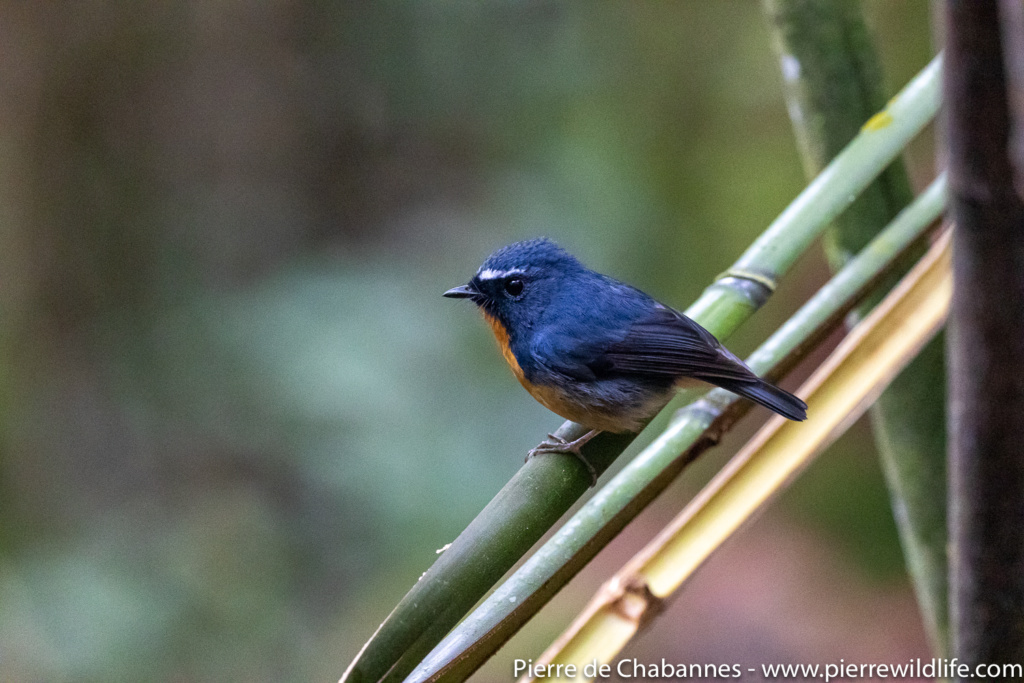 This beautiful male Snowy-browed flycatcher (Ficedula hyperythra sumatrana) stole the show ! I never had an opportunity to see this exquisite but so small species from this close !
This beautiful male Snowy-browed flycatcher (Ficedula hyperythra sumatrana) stole the show ! I never had an opportunity to see this exquisite but so small species from this close !
It took me three hours of waiting patiently in the cold, repelling a few wasps, to finally hit my main target ! The pair of Crimson-headed partridges that live nearby finally came over to investigate the area for food, giving me more than 30 minutes of unobstructed views of both sexes. The male has vibrant colors and the female is duller but still has bright red tail feathers. I was even lucky to hear the male call from close and I was very surprised at how loud the call actually is.
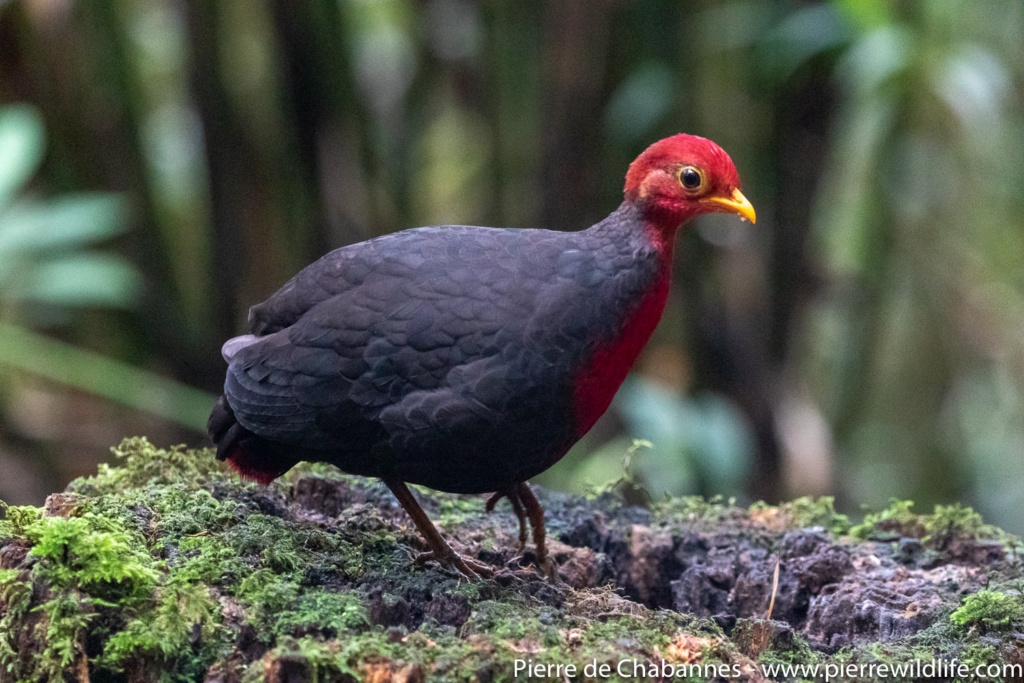 At last, today’s target appears ! The colors of the male Crimson-headed partridge (Haematortyx sanguiniceps) are so vibrant !
At last, today’s target appears ! The colors of the male Crimson-headed partridge (Haematortyx sanguiniceps) are so vibrant !
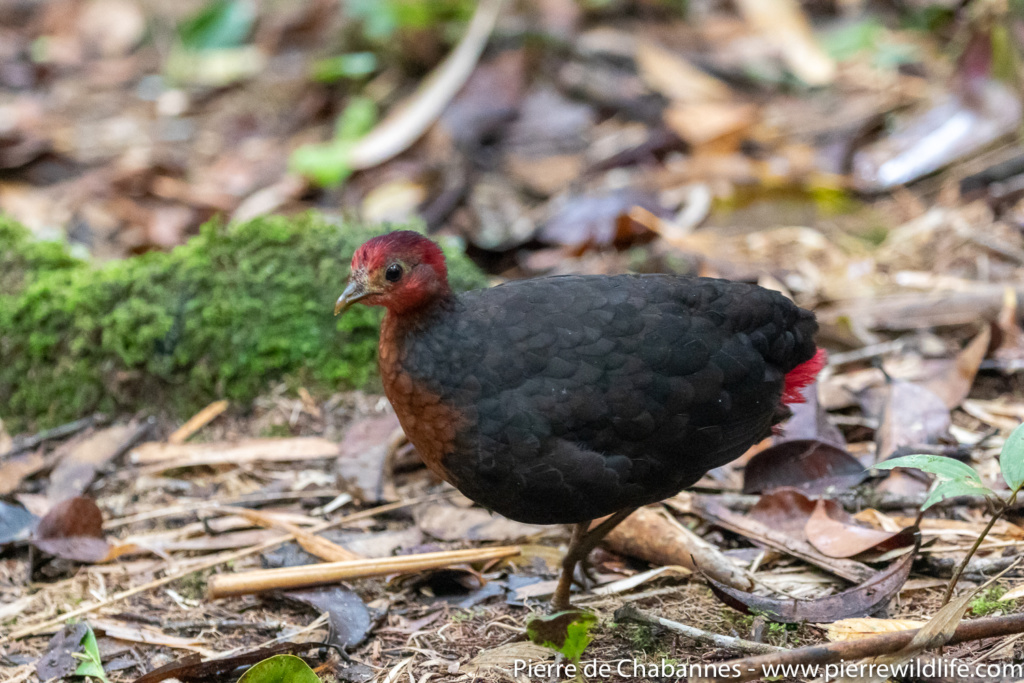 Although less colorful, the female Crimson-headed partridge is still beautiful ! Look at the brightness of her red tail feathers !
Although less colorful, the female Crimson-headed partridge is still beautiful ! Look at the brightness of her red tail feathers !
But this wasn’t the only highlight of the day as the trip to Gunung Alab also provided me with early morning views of the Bornean subspecies of the Sunda laughingthrush (Garrulax palliatus schistochlamys) and the local endemic Treacher’s laughingthrush (Pterorhinus treacheri) that seems to be easier to locate in Mt Kinabalu. Other mountain endemics such as the White-throated fantail (Rhipidura albicollis kinabalu) and even the Whitehead’s broadbill (Calyptomena whiteheadi) have been spotted in the area.
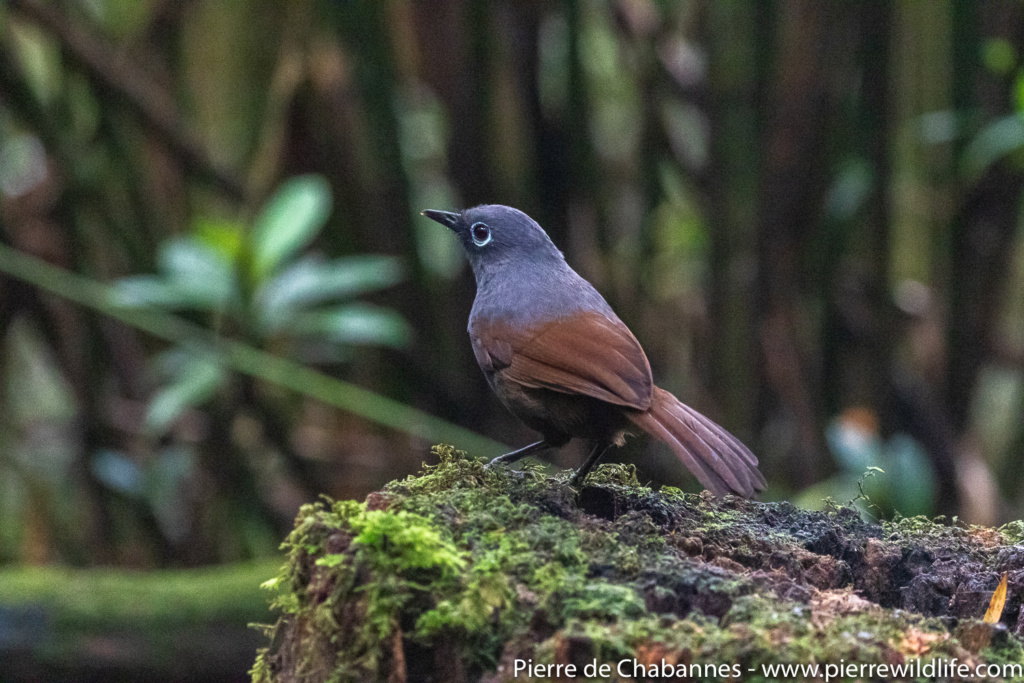 Early morning view of a mixed flock featuring three Sunda laughingthrushes (Garrulax palliatus schistochlamys) including this specimen who stayed on this tree stump just long enough for me to grab a single sharp photo !
Early morning view of a mixed flock featuring three Sunda laughingthrushes (Garrulax palliatus schistochlamys) including this specimen who stayed on this tree stump just long enough for me to grab a single sharp photo !
But what about mammals ? Well… I have to say that I didn’t see many, however quality is always better than quantity in that case ! When I arrived at the birding spots early morning, I noticed what looked from afar like a tree shrew. After watching the little beast for a couple of hours, I finally managed to get a few good opportunities for photos. I was expecting to be in real trouble with identification since the treeshrew family is notoriously difficult to sort out, especially on Borneo with so many species found on the island. But this animal didn’t really look like a tree-shrew when I finally took a closer look at my photos. I realised it was a squirrel species that I had never seen before and, to my excitment, it turned out to be a Bornean mountain endemic : the Bornean mountain ground squirrel (Sundasciurus everetti) !
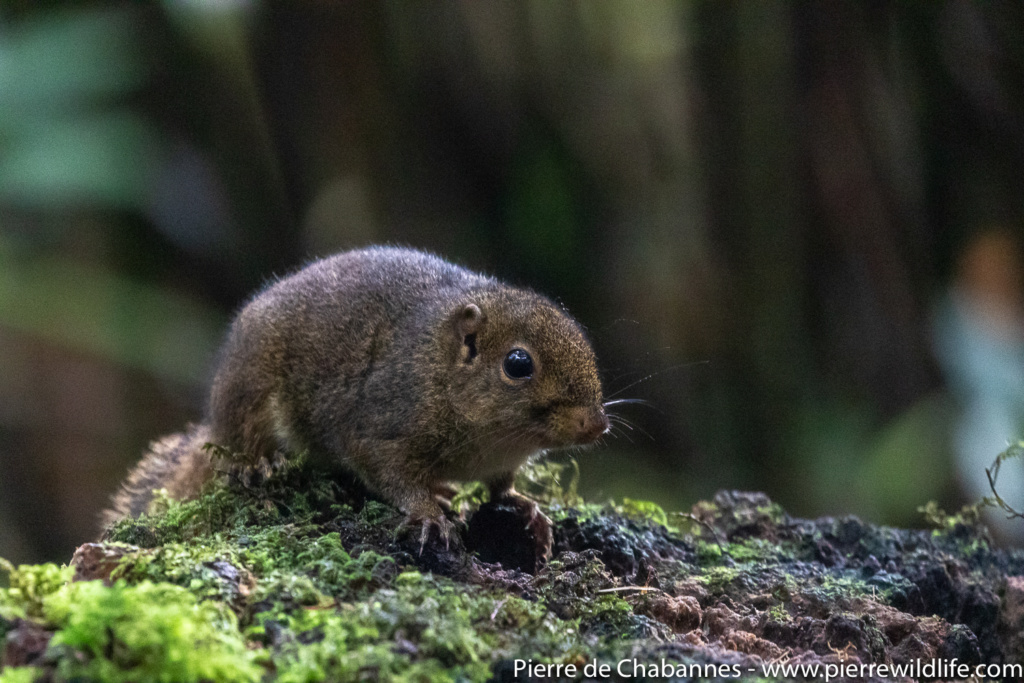 Squirrels can be quite shy and difficult to photograph but this Bornean mountain ground squirrel (Sundasciurus everetti) was really curious and allowed me to get very nice photos !
Squirrels can be quite shy and difficult to photograph but this Bornean mountain ground squirrel (Sundasciurus everetti) was really curious and allowed me to get very nice photos !
While walking my way down, hoping to finally see some butterflies, my attention got caught by movement in the tall ferns that were abundant on the path’s sides. I could hear chirping and even fairly loud calls at some time but the birds remained unvisible for several minutes until I could finally locate the little critter ! After nearly an hour of “hunting”, I finally managed to grab one “OK” shot of what turned out to be a really skulking species, the Aberrant bush-warbler (Horornis flavolivaceus banksi) !
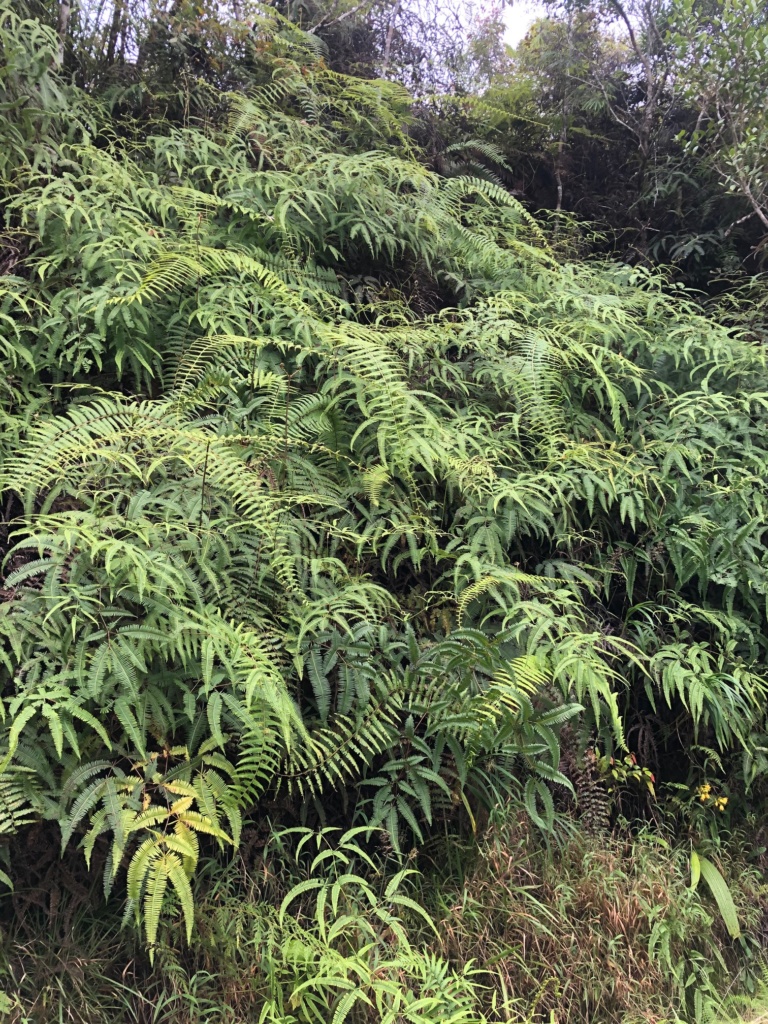 The luxuriant vegetation on the path’s sides, home to many Aberrant bush-warblers.
The luxuriant vegetation on the path’s sides, home to many Aberrant bush-warblers.
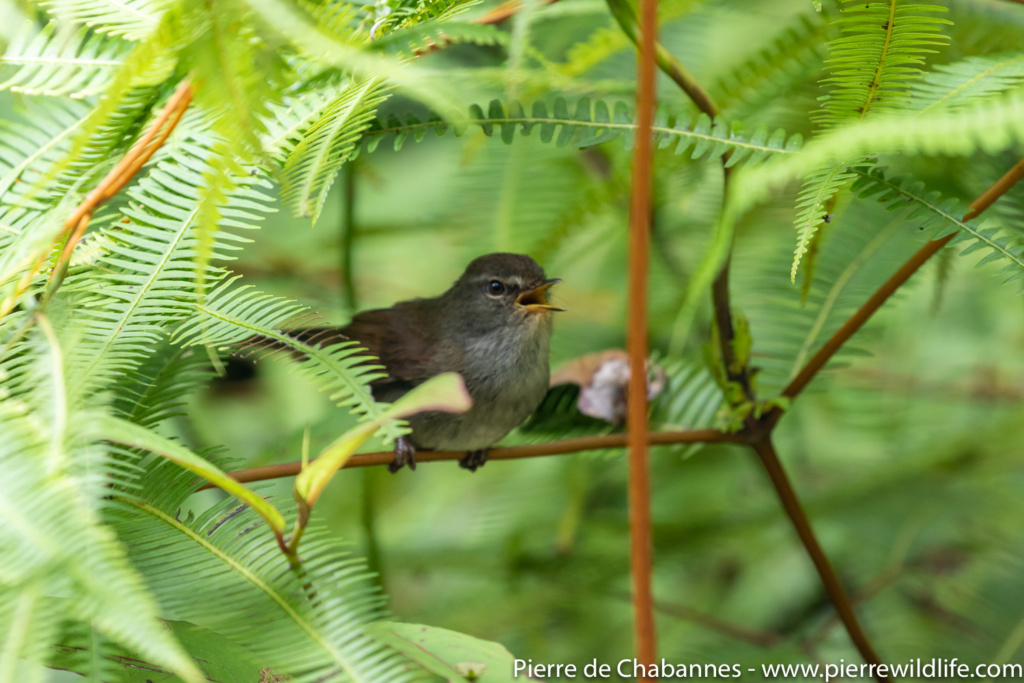 The skulker has finally been seen ! Meet the cute but very shy Aberrant bush-warbler (Horornis flavolivaceus banksi) !
The skulker has finally been seen ! Meet the cute but very shy Aberrant bush-warbler (Horornis flavolivaceus banksi) !
As said in the introduction, I am definitely counting to go back for a longer time in the hopes of documenting many more species from the area, hike longer and get an even better glimpse at the biodiversity of Gunung Alab ! This will be for the end of 2023 if all goes well !
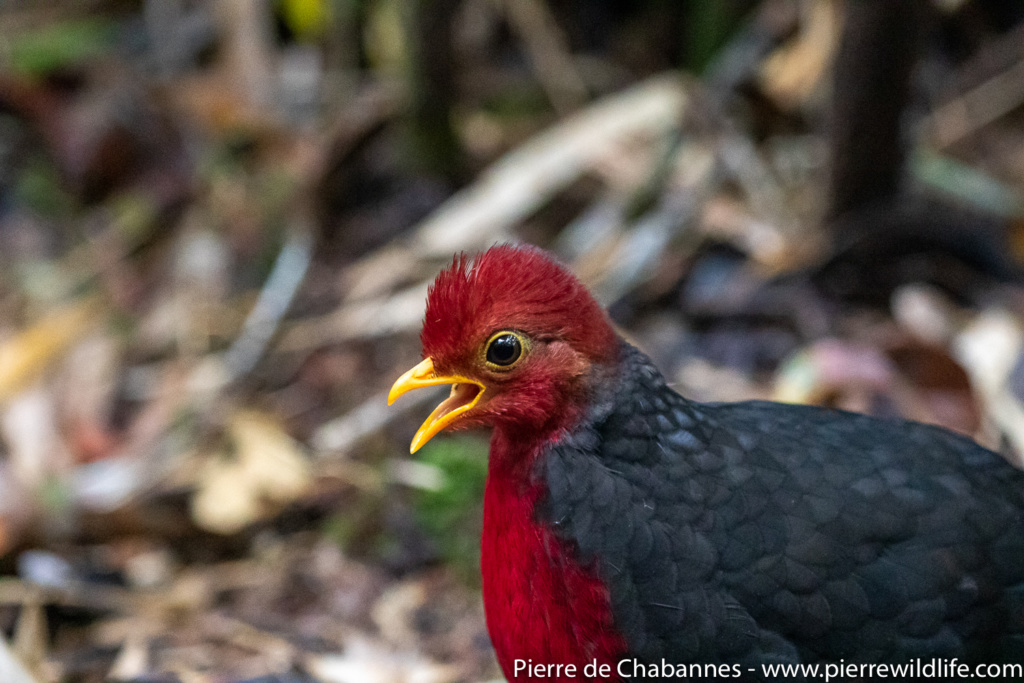 The male Crimson-headed partridge treated me with displays and very loud calls !
The male Crimson-headed partridge treated me with displays and very loud calls !
Until then, take care !
Pierre de Chabannes
Founder, Pierre Wildlife